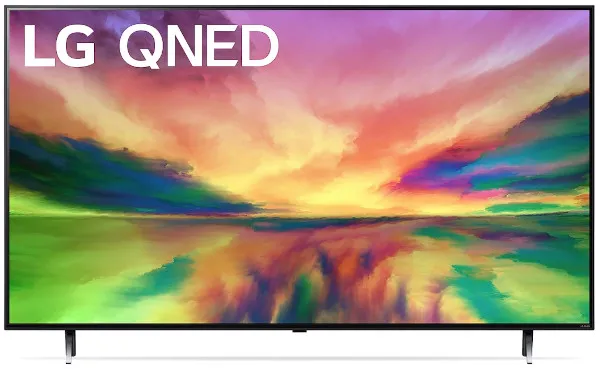In display technologies, QNED (Quantum Nano Emitting Diode) and OLED (Organic Light Emitting Diode) stand out as two of the most innovative and talked-about advancements. Both technologies have significantly impacted how we experience visual media, from televisions to smartphones.
This article aims to delve into the intricacies of QNED and OLED, comparing their features, applications, and future potential.
Understanding QNED Technology
QNED technology represents a significant leap in display quality. It combines quantum dots and NanoCell technology to produce vibrant colors and deep blacks.
This technology is known for displaying a wide color gamut and maintaining color accuracy at various viewing angles. Recent advancements in QNED have enhanced its brightness and contrast, making it a strong contender in the high-end display market.

Exploring OLED Technology
On the other hand, OLED technology is renowned for its exceptional contrast ratios and true blacks. This is due to its ability to control the lighting at a pixel level, turning it off completely to achieve perfect black.
OLED displays are thinner and more flexible than traditional LED screens, allowing for more innovative design possibilities. Recent developments have focused on improving brightness levels and reducing the risk of burn-in, a common concern with OLED screens.
Comparing QNED and OLED
Picture Quality
- Color Accuracy and Vibrancy: QNED excels in producing vibrant and accurate colors with its quantum dot and NanoCell technology. The quantum dots enable a wide color gamut, while NanoCells enhances color purity. OLEDs are also known for excellent color accuracy, but their standout feature is the ability to produce perfect blacks due to their self-emissive nature. This contrast capability gives OLED an edge in delivering more lifelike and dynamic images.
- Contrast Ratios and Black Levels: OLED displays are unrivaled in their contrast ratios because each pixel emits its light, allowing for true blacks when pixels are turned off. QNED, despite its advanced backlighting system, cannot achieve the same level of black as OLEDs. However, QNED’s local dimming technology does allow for deeper blacks and improved contrast compared to traditional LCDs.
- Brightness and Viewing Angles: QNED screens generally offer higher peak brightness levels than OLEDs, making them more suitable for well-lit environments. In terms of viewing angles, OLEDs maintain color accuracy and contrast at wider angles, but QNED’s NanoCell technology also allows for a decent viewing experience from off-center positions.

Lifespan and Durability
- Longevity: OLED technology has historically faced screen burn-in and longevity challenges, although recent advancements have significantly improved these aspects. QNED, less susceptible to burn-in and not reliant on organic compounds, is perceived to have a potentially longer lifespan.
- Wear-and-Tear Issues: OLED screens can suffer from burn-in when static images are displayed for extended periods. QNED, on the other hand, is less prone to such issues, making it a more robust choice for scenarios where static content is common.
Energy Efficiency
- Power Consumption: OLED displays are known for their energy efficiency, particularly because they can turn off pixels completely, reducing power consumption. QNED, while more efficient than traditional LCDs, still lags behind OLED regarding overall energy efficiency.
Cost and Availability
- Pricing Trends: OLED technology has become more accessible price-wise over the years. QNED, being relatively new, tends to be more expensive, but this may change as the technology matures and production scales up.
- Market Availability: OLEDs are widely available in various consumer electronics, from TVs to smartphones. QNED is currently more niche but is expected to become more prevalent as manufacturers continue to invest in this technology.
Environmental Impact
Both technologies are an improvement over traditional LCDs in terms of environmental impact. With their higher energy efficiency, OLEDs have a slight edge, but QNED is also making strides in this area with more eco-friendly manufacturing processes and materials.
Applications and Use Cases of QNED and OLED
QNED Applications
- Bright Environment Viewing: Due to their higher brightness levels, QNED displays are particularly well-suited for environments with a lot of ambient light, such as living rooms with large windows or outdoor display settings.
- Large-Scale Displays: The scalability of QNED technology makes it ideal for large-format displays, such as those used in commercial settings like advertising billboards, public information displays, and large-scale digital signage.
- Professional and Creative Work: The color accuracy and wide color gamut of QNED screens make them suitable for professional use in fields like graphic design, photography, and video production, where color fidelity is crucial.
- Gaming: Gamers can benefit from QNED’s quick response times and vibrant colors, enhancing the gaming experience, especially in brightly lit rooms.
- Home Entertainment: For consumers seeking a high-quality viewing experience in various lighting conditions, QNED TVs offer a great balance of performance with their enhanced brightness and color accuracy.
OLED Applications
- Home Theater Environments: OLED’s ability to display true blacks and its superior contrast ratios make it ideal for home theater setups, where ambient light can be controlled to maximize the viewing experience.
- Smartphones and Wearables: The flexibility and thinness of OLED screens are perfect for smartphones, smartwatches, and other wearable devices. Their ability to be made thin allows for sleeker, more ergonomic designs.
- Art and Design Displays: OLED’s true blacks and color accuracy are advantageous for art galleries and museums, where the display quality can significantly impact the viewer’s experience of the artwork.
- Professional Video and Photo Editing: OLED screens’ accurate color reproduction and contrast make them suitable for professional video editors and photographers who require precision.
- Gaming in Controlled Lighting: OLED TVs offer superior visual quality for gamers who prefer playing in darker environments, with their high contrast and color depth enhancing the immersive experience.
Shared Applications
Both QNED and OLED technologies find common ground in several areas:
- Retail and Commercial Displays: Both are used in retail environments for advertising and information displays, where their vibrant colors and sharp images can attract customer attention.
- Healthcare Displays: In medical settings, the high resolution and color accuracy of both QNED and OLED displays benefit detailed medical imaging.
- Educational Tools: In educational settings, both technologies offer advantages in terms of display quality and visibility, enhancing learning materials and presentations.
Cost Considerations of QNED and OLED
Pricing Trends
- OLED Pricing: Historically, OLED displays were quite expensive due to the complexity of their manufacturing process. However, as the technology has matured and production methods have improved, prices have gradually decreased. OLED TVs and displays are now more accessible to a broader range of consumers, though they still generally command a premium over standard LED/LCDs.
- QNED Pricing: Being a newer technology, QNED displays are typically positioned in the higher-end market segment. The advanced technology that combines quantum dots with NanoCell layers and Mini LED backlighting contributes to a higher cost of production. As the technology matures and production scales, prices are expected to become more competitive.
Factors Influencing Cost
- Technology and Manufacturing Complexity: OLED’s organic compounds and the need for precise control over the lighting of individual pixels add complexity to the manufacturing process, impacting cost. QNED’s combination of quantum dots, NanoCell technology, and Mini LED backlighting also requires sophisticated manufacturing techniques, contributing to its higher price point.
- Screen Size and Resolution: Larger and higher resolutions typically command higher prices in QNED and OLED displays. The cost escalates significantly for ultra-large or ultra-high-definition screens.
- Brand and Additional Features: The cost of both QNED and OLED TVs can vary significantly depending on the brand and additional features like smart TV capabilities, sound quality, design elements, and connectivity options.
Cost vs. Performance Analysis
- OLED: For those prioritizing picture quality, particularly contrast and black levels, OLED TVs may offer better value despite their higher price. The unparalleled picture quality, especially in controlled lighting conditions, justifies the investment for enthusiasts and professionals.
- QNED: For consumers looking for a balance between high-quality display and brightness, especially in well-lit environments, QNED might offer better value. Its durability and resistance to burn-in also make it a cost-effective choice in the long run, particularly for commercial or heavy-use scenarios.
Long-Term Considerations
- Energy Efficiency: The operational cost, in terms of energy consumption, should also be considered. OLEDs are generally more energy-efficient than QNED displays, potentially leading to lower electricity bills over the long term.
- Durability and Maintenance: The longer lifespan and reduced risk of burn-in with QNED might translate to lower maintenance costs and a longer replacement cycle, offering better long-term value.
Future Outlook of QNED and OLED
Future Developments in QNED Technology
- Advancements in Quantum Dot Technology: Researchers continually explore ways to enhance quantum dots’ efficiency and color range. Future QNED displays may feature broader color gamuts and higher peak brightness, making them more appealing for high-dynamic-range (HDR) content.
- Improved Manufacturing Processes: As manufacturing techniques become more refined, we expect QNED displays to become more affordable. This could lead to wider adoption in both consumer electronics and commercial applications.
- Integration with Emerging Technologies: QNED might see integration with other emerging technologies like flexible displays or augmented reality (AR), expanding its applications beyond traditional TV and monitor screens.
- Eco-Friendly Developments: With growing environmental concerns, future advancements in QNED technology may focus on more sustainable manufacturing processes and materials, reducing the ecological footprint of these displays.
Future Developments in OLED Technology
- Enhanced Longevity and Burn-in Solutions: One of the primary focuses for OLED technology will be improving longevity and finding more effective solutions to prevent burn-in, making OLED displays more reliable and durable.
- Flexible and Transparent OLEDs: The potential for flexible and transparent OLED displays could revolutionize various sectors, including smartphones, wearables, automotive displays, and innovative architectural applications.
- Cost Reduction Strategies: As OLED manufacturing processes continue to improve, production costs are expected to decrease further, making OLED technology more accessible to a broader market.
- Hybrid OLED Technologies: There is ongoing research into combining OLED with other technologies (like QLED) to create hybrid displays that offer the best of both worlds regarding brightness, color accuracy, and energy efficiency.
Market Trends and Consumer Preferences
- Increased Demand for High-Quality Displays: As consumers become more discerning about display quality, the demand for advanced technologies like QNED and OLED is expected to grow, particularly in gaming, home entertainment, and professional creative work.
- Shift Towards Eco-Friendly Products: There is a growing trend towards environmentally sustainable products. Future developments in both QNED and OLED technologies are likely to emphasize eco-friendliness, both in terms of manufacturing processes and energy consumption.
- Diversification of Applications: Both QNED and OLED technologies are likely to find new applications in various fields, including automotive, healthcare, and education, as their unique advantages are leveraged in different contexts.
Conclusion
QNED and OLED displays offer unique advantages and have their challenges. The choice between them depends on individual needs and preferences.
As technology advances, we can expect both QNED and OLED to evolve, further enhancing our visual experiences and offering more choices to consumers.






